Over the past few years, there has been more and more urgency for companies across varied industries to evolve from slow-moving hierarchies to flexible and fast workflows. This shift has opened new possibilities and ideas around how employees work as the world changes.
Never before have employees expected so much from their workplaces. We don’t just want our workplaces to be flexible. To quote psychologist Esther Perel, “we want our work to be attentive to our physical and emotional well-being and we want our jobs to help us find a sense of purpose and meaning in what we do.”
Because companies are not meeting their employee’s expectations, we are now seeing what has been slated as “The Great Resignation.” A mass exodus of employees leaving their workplaces searching for flexibility and purpose.
Finding a balance inside the agile framework could empower employees to find greater purpose and make decisions that directly shape and affect the outcome of their work. Smaller groups are ideal for organizations looking to be more agile. They allow for greater work flexibility and improve employees’ focus, making it easier to coordinate amongst colleagues and complete tasks faster. A company’s ability to be agile could also lend flexibility to projects or help create an internal talent marketplace, keeping employees engaged by working on smaller tasks that pique their interest and are within different teams.
What is business agility, and why should you make the shift?
Business agility was born in the tech start-up sector and is a popular mindset and method used in business and product development. It’s a methodology aiming to maximize profit, deliver value and allow employees to make the most impact in their work. Essentially, it is the ability to move quickly and smoothly.
Being agile isn’t just for tech start-ups. Many types of companies are making the shift. It helps organizations navigate constant change in disruptive and fast-moving markets. Smaller, more flexible teams can make decisions fast, and having access to the resources and people they need makes it easier to navigate a sustainable and scalable business model. They can quickly turn uncertainty into opportunity - and flourish.
If it’s about launching a new product, all the necessary people will come together to create a team. Their job is to ask, “Instead of launching a new product in three years, how can we do it in six months?” Small teams support quick decision-making. They give employees the flexibility to fail and learn fast. At the same time, they are empowering teams to see the real-time impact in their work and make decisions or pivot quickly.
Becoming agile can be a big feat for companies with 70,000+ people spanned over 80 countries. Organizations of this size find that a strong backbone is essential to HR, finance and budgeting systems. However, large organizations aren’t the only ones looking to be more agile. As start-ups scale, they have similar needs. A strong structure allows for agility, and when employees understand the framework they’re working in and their role, they can make decisions fast.
How to create a foundation for business agility
Creating a stable foundation enables your team to be agile without becoming chaotic.
We’ve found these three steps from Prialto to be beneficial to building and sustaining stability; you need to:
- Build a stable autonomy
- Create role and goal clarity
- Create and maintain a safe, collaborative learning culture
These three actions set clear expectations for employees and give them strategic boundaries to innovate within. Here’s how to implement those steps:
1. Build a stable autonomy
The first step in improving organizational agility is empowering employees at all company levels to solve problems quickly based on accessible and accurate information.
Traditional leadership hierarchies often block agility, especially when managers dictate which projects to work on, how they should be completed and enforce other constraints that limit their team’s ability to adapt to their changing environment.
To achieve an agile mindset, you need to give your employees a secure range of autonomy to quickly make decisions, solve problems and try new approaches without waiting for permission or being afraid to fail. Creating a foundation of autonomy can be challenging since stability and independence are often considered opposing forces. To find a good balance, you need to set specific goals and support your employees to find the pathways to achieve them.
2. Create role and goal clarity
Every employee should have a strong understanding of the KPIs they are responsible for, their actions needed, and the resources available to achieve these metrics.
Leaders often fail to create stability by assuming their employees know their goals and what they should be doing. However, in a Gallup survey, only about half of employees reported fully understanding what’s expected of them.
In goals and roles, lack of clarity can often lead to employee unhappiness. When employees struggle to connect their work to their goals, they don't understand the value they're bringing to the company. To create concrete role clarity, you need to work with your employees to help set goals for themselves. These goals give them guidance and autonomy while providing freedom to explore and test innovative approaches to achieve their goals. To support them in staying on track, check-in with your employees regularly and see if there's anything you can do to help them on their way.
3. Create and maintain a safe, collaborative learning culture
Autonomy empowers employees to adapt and respond to the challenges they face. But a safe, collaborative learning culture encourages people to act on those freedoms and develop innovative solutions based on the knowledge shared within their organization. A collaborative culture creates an environment with regular and intentional collaboration, not just when necessary.
While every thriving culture has unique qualities that make it special, there are key elements that great agile leaders do to shape a collaborative environment.
See failures as growth opportunities
The agile mindset makes it possible to pivot and test new approaches and ideas. Some ideas, however, will not bring expected outcomes. In these cases, the focus should be on learning.
Encouraging employees to embrace and share all outcomes and ask their team and colleagues questions when they arise will help solve problems faster and allow employees to learn from colleagues and avoid similar situations.
A critical aspect of sharing and growing is creating a psychologically safe space. Here are some points to consider as read on Havard Business Review, but we encourage everyone attending meetings regularly to dive deeper into this topic:
- allow each person to take their time and complete their thoughts
- ask follow-up questions for clarity if necessary
- share what is valuable about someone’s question or comment
- invite people who have not spoken to share their ideas ( but first, ask for permission to do this at the beginning of the meeting)
- answer all questions truthfully
- acknowledge the quality of the conversation and thank the group for it
But, what if employees still feel uncomfortable asking questions despite all your efforts to create a safe space?
Having a place like the Starmind network lets employees ask questions anonymously and freely, without judgment, while capturing answers from knowledge experts (colleagues) within your organization. Employees gain access to the on-demand knowledge they need to become more agile. In addition, platforms like Starmind help embed a culture of collaboration within your organization.
Support recognition culture
If you see something you like, say something. Be specific, be honest, and take the time to tell your colleagues and employees how you feel.
When employee recognition is prevalent in your culture, people become more open to collaboration.
For example, when employees answer questions within Starmind, employees can rate their colleague's answer and give recognition with a click of a button. Or they can add to the conversation by including their experience or additional information that may enhance the quality of the answer and further encourage knowledge sharing and collaboration.
Encourage Cross-Team Collaboration
Collaboration is often essential when testing innovative solutions between specialists across departments. When present, problems get solved faster and create a connective culture where employees feel linked to multiple parts of the organization. It also builds camaraderie when colleagues help each other achieve goals. But, finding the right specialists to help an agile team can take days or weeks, especially in large companies. Empowering your employees to find specialist faster not only helps your organization solve problems quicker or go to market sooner but encourage collaboration.
Starmind Gigs solves this problem by making your employees' experiences and aspirations more visible. Gigs creates an internal talent marketplace within your organization. It enables employees to connect with the specialists they need and staff their teams quickly.
Conclusion
The tools used by your employees to share knowledge and collaborate directly impacts your ability to be agile. They help secure a foundation that encourages autonomy, creates clarity for employees, and fosters a safe and collaborative learning environment. However, supporting an agile workforce takes dedication from everyone in the organization. If you're looking to increase productivity, innovation, and decrease time-to-market, maybe it's time to improve your agility.





